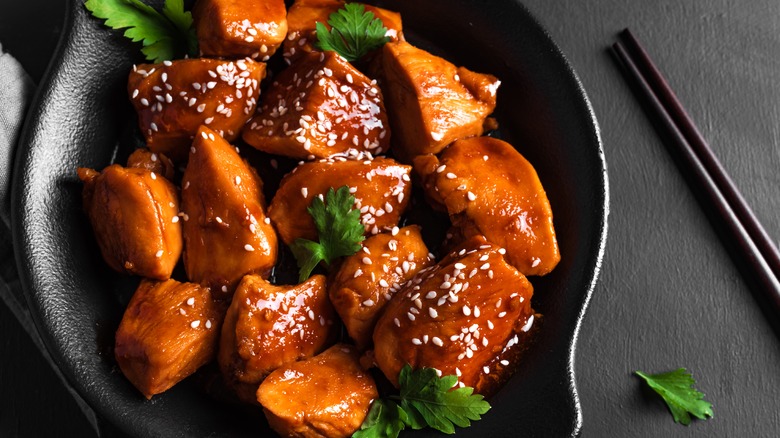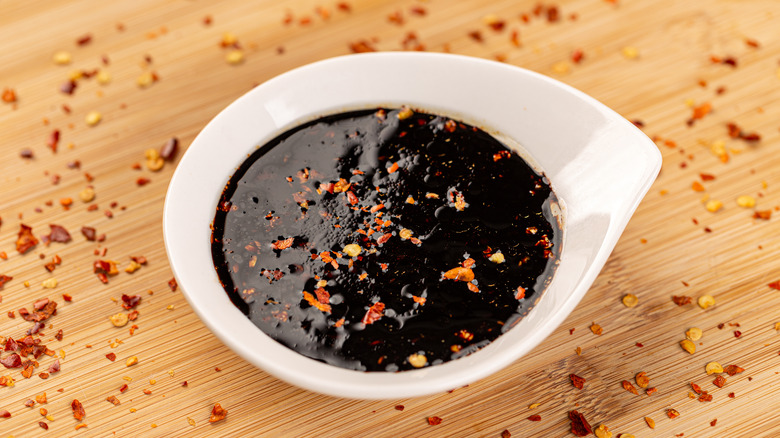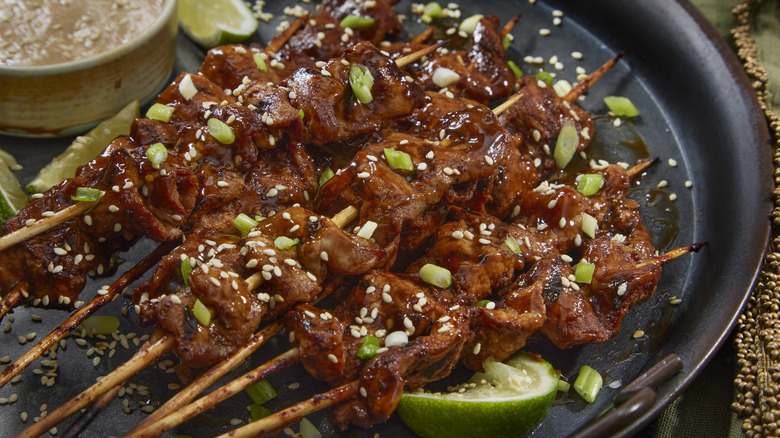What Exactly Is Teriyaki Sauce Made Of?
A juicy piece of teriyaki meat or vegetable often leaves diners licking the sticky amber sauce off their fingertips, pondering the ingredients of that sweet, salty, umami-rich sauce long after they've savored the last morsels. Teriyaki is a cooking style that derives its name from the Japanese words for "luster" (teri) and "grill or boil" (yaki). Meats like chicken and beef, proteins such as tofu, and various vegetables are all brushed repeatedly with a thick teriyaki sauce as they're grilled or broiled, imbuing them with a glossy sheen and a wealth of flavor.
The sauce that makes teriyaki so appealing consists of three main components: soy sauce, sugar, and mirin. Soy sauce provides a savory, umami quality, while caramelized sugar and mirin — a sweet Japanese rice wine similar to sake but with more sugar and less alcohol — contribute the teri, or luster, to teriyaki. Making teriyaki sauce requires only these three ingredients, but that's not to say the sauce lacks variations. Depending on your personal preference for the thickness, sweetness, or overall flavor profile of your teriyaki, you can easily customize the sauce at home.
How to make teriyaki sauce
The incredible depth of flavor in teriyaki sauce might fool you into thinking that it's challenging to make from scratch at home. On the contrary, it's quite straightforward. In this quick and easy skillet teriyaki chicken recipe, all you need to do is combine sake, mirin, soy sauce, sugar, rice vinegar, garlic powder, and ground ginger in a bowl. Stir until the sugar dissolves, then add the sauce to a pan and bring it to a simmer. Cook for between three and five minutes, or just until it thickens.
Although traditional Japanese teriyaki sauces are generally thinner than those popular in the U.S., you can add cornstarch to create a thicker, more lush sauce. To do this, whisk cornstarch and water together and pour the slurry into the above sauce before adding it to the pan to simmer. As the liquid reduces, you'll end up with a thicker version of teriyaki sauce.
Feel free to add aromatics like freshly chopped garlic, ginger, and red pepper flakes if you like. When incorporating these aromatics, chop the ginger and garlic into larger slices for a subtler flavor, or into finer pieces for more intensity.
Ways to cook with teriyaki sauce
One of the best ways to cook with teriyaki sauce is to use it as a glaze or a marinade. You can generously coat meats and fish with teriyaki sauce and then grill, broil, pan-fry, slow-cook, or stir-fry them. However, when cooking with teriyaki sauce, there are a few things to keep in mind. Due to its sugar content, teriyaki sauce is prone to burning under direct high heat, so it's best to apply the sauce at the last minute if you're cooking on a grill, for example. When used as a marinade, be sure to remove any excess sauce from the food before cooking to prevent burning.
Though teriyaki sauce may burn under direct heat, it performs particularly well in a wok when stir-fried or when cooked slowly at lower temperatures. The heat of the wok further thickens the sauce and helps it coat the food more evenly, while low temperatures, like those in an oven, allow the sugar in the sauce to caramelize. Beyond cooked preparations, teriyaki sauce also serves as a fabulous dipping condiment. The rich sauce pairs well with dumplings, kebabs, and chicken wings — the possibilities are endless!



